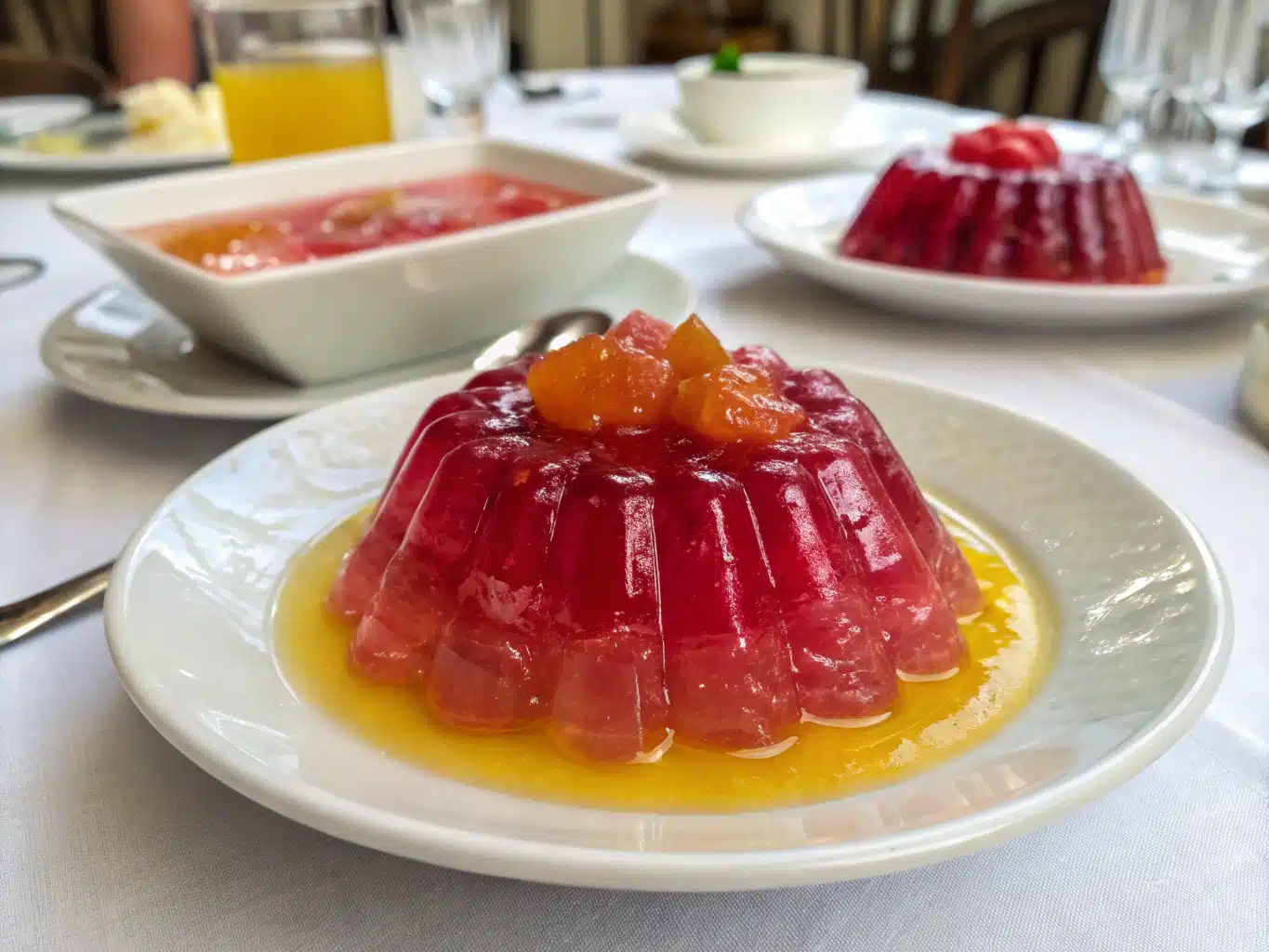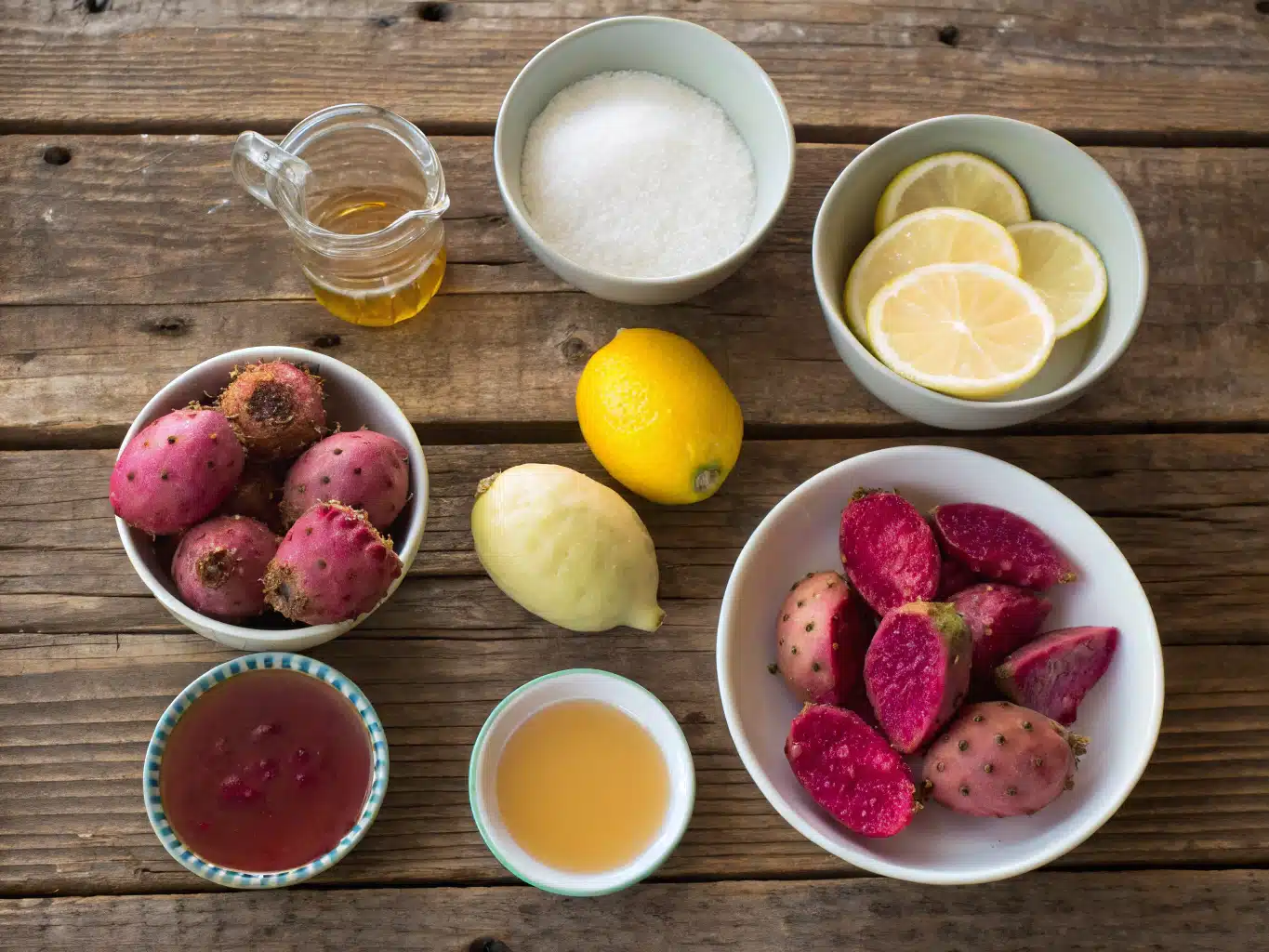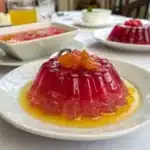
Table of Contents
If you’ve ever wandered through a Portland farmer’s market in late summer, you’ve likely spotted the electric pink hues of prickly pears stacked like treasure among green cactus paddles. A few years ago, one taste of backyard-foraged jelly made from this fruit shifted my entire pantry game. Sweet, floral, and just a little wild—prickly pear jelly isn’t just a spread, it’s a flavor experience. Somewhere between watermelon, bubblegum, and raspberry, this jelly became a staple in my food experiments. Whether slathered on toast or spooned over plant-based cheesecake, I’ve found new ways to celebrate this cactus fruit each year.
This guide will take you through everything you need to know to make prickly pear jelly: from harvesting and handling the fruit, to unlocking its vivid flavor profile. We’ll explore my foolproof recipe, walk through preparation tips, and answer important questions like peeling fruit safely, storage life, and that unmistakable desert-born flavor punch.
Discovering Prickly Pear Jelly
From Foraging Curiosity to Pantry Hero
Growing up in northern California, I saw prickly pears occasionally at roadside stands, but it wasn’t until I moved north to Portland and started cooking more regional, seasonal recipes that I gave this fruit a real try. The first time I made prickly pear jelly, I think I used oven mitts to peel the pears—true story—because I hadn’t yet discovered how to handle their tiny but mighty spines (called glochids). Still, I was hooked. Homemade jelly that held its own in both flavor and jewel-toned beauty? Absolutely worth the prickles.
Today, I source fresh fruits from friends’ gardens or forage ethically whenever possible. If you’re in the Southwest or parts of California, you’ll find these fruits abundant in late summer. And good news—if you’re not in a foraging zone, stores like Whole Foods or specialty grocers may carry them fresh or frozen. Once you’ve made prickly pear jelly, trust me—you’ll be looking for ways to work it into breakfast boards, plant-based pastries, and hey, even swirled into prickly pear lemonade for a zesty afternoon cooler.
Why Prickly Pears Are Worth the Effort
At first glance, this spiny cactus fruit might seem intimidating. But inside lies a radiant magenta pulp with a flavor unlike anything else. Think wild watermelon meeting juicy cherry with soft floral notes. Beyond its taste, prickly pear is rich in vitamin C, magnesium, and antioxidants—and, according to the National Center for Complementary and Integrative Health, it’s been traditionally used to support blood sugar and inflammation regulation.
Once you try it, you’ll want more than just jelly. In fact, I’ve turned this versatile fruit into prickly pear candy, vibrant prickly pear juice, and savory Mexican-inspired dishes. But it always circles back to jelly—that smooth, sticky, jewel-toned spread that captures a desert summer in every spoonful.
How to Make Prickly Pear Jelly at Home
Ingredient List

Here’s what you’ll need to whip up one of the most vibrant, naturally sweet jellies you’ll ever taste. The recipe below yields approximately six half-pint jars.
| Ingredient | Substitution / Notes |
|---|---|
| 4 cups prickly pear juice | From ~25 fruits; use prickly pear syrup base if needed |
| 1/4 cup fresh lemon juice | Enhances acidity for safe canning |
| 1 box (1.75 oz) powdered pectin | Sure-Jell or Pomona’s works well |
| 4 cups organic cane sugar | Agave or maple syrup makes the jelly softer |
Optional: Add a sprig of fresh rosemary or a pinch of chili flakes for a gourmet flavor twist.
Timing Breakdown
This recipe doesn’t take all day, which is why I love whipping up a batch on weekend mornings.
- Prep time (peeling and juicing): 30 minutes
- Cooking and jarring: 45 minutes
- Processing time: 10–15 minutes
Total: About 90 minutes—roughly 20% shorter than your average citrus or berry jelly recipe, thanks to the soft texture of cactus fruit.
Step-by-Step Instructions
- Prepare your prickly pears carefully by holding them with tongs and using a knife to slice off the ends and lengthwise down the side. The peel will come off easily—no need to handle the spines directly.
- Cut fruit into chunks and simmer over low heat with a splash of water for 10 mins to release juice.
- Mash gently, then strain through a fine mesh sieve or cheesecloth. You’re aiming for clean, seed-free juice.
- Add this juice to a wide pot along with lemon juice and pectin. Stir constantly over high heat until it boils.
- Once boiling, add sugar all at once, stir, and return to a hard boil. Continue 1–2 minutes, then remove from heat.
- Skim foam from the top and ladle into sterilized jars, leaving ¼” headspace.
- Wipe rims, seal with lids, and process jars in a hot water bath canner for 10 minutes.
Set to cool for 12–24 hours. You now have a shelf-ready batch of glowing pink jelly.
Exploring the Flavor & Pairing Possibilities
Flavor Notes of Prickly Pear Jelly
What makes prickly pear jelly a standout isn’t just its neon magenta color—it’s the flavor. It hits your palate with sweet-smelling watermelon, bursts into subtle strawberry-rhubarb, and finishes with a hibiscus-like tang. Some folks pick up notes of bubblegum or melon candy, which makes it craveable—but it’s 100% natural.
Texture-wise, it’s silky with a slight viscosity. For added depth, I like pairing it with nut-based cheeses or folding it into a prickly pear preserves glaze for roasted carrots. It also layers beautifully in baked goods or as a base in vinaigrettes.
Best Season to Forage or Buy Prickly Pears
Prickly pears ripen in late summer—typically between August and October, depending on your local climate. Look for deep magenta or red fruits with a slight give. Avoid green ones; they’re underripe and high in oxalates.
If you’re harvesting wild, always identify your cactus correctly and use tongs or thick gloves. For those without local access, check international markets for frozen pulp or specialty grocers for fresh fruit flown in. Curious about other prep methods? Don’t miss our guide to making prickly pear jam.
Storage, Shelf Life & Creative Uses
Shelf Life of Prickly Pear Jelly
Properly canned and sealed, prickly pear jelly can last 12–18 months in a cool, dark pantry. Once opened, refrigerate and use within 6 weeks. Store in glass jars to preserve flavor and color—plastic or reactive metals can compromise taste.
TIP: Keep a small batch in the fridge for easy spooning onto warm muffins or stirring into oats. Always label jars with the date you canned them.
Wild Ways to Use Your Jelly
Beyond toast, there are endless applications for this cactus spread:
- Add a dollop onto roasted Brussels sprouts
- Use as a filling in chickpea-based thumbprint cookies
- Swirl it through prickly pear juice for a tea splash
- Pair with vegan brie on crostini for your next gathering
Once you start incorporating it, you’ll realize jelly can be far more than breakfast fare!
Frequently Asked Questions
How do you make prickly pear jelly?
You simmer peeled prickly pears to extract juice, then combine it with lemon juice, pectin, and sugar. After boiling briefly, jar the hot jelly and process it in a water bath to seal.
Peel prickly pears for jelly?
Absolutely. Peeling removes the outer skin and micro-spines. Use gloves or tongs to hold the fruit and slice off the ends and sides. Avoid touching the skin directly.
Shelf life of prickly pear jelly?
Sealed jars last 12–18 months in the pantry. Once opened, store in the fridge and use within 4–6 weeks.
Flavor notes of prickly pear jelly?
Expect sweet, floral flavor with watermelon, hibiscus, and bubblegum notes—a balance of earthy and fruity that’s uniquely refreshing.
Conclusion
Prickly pear jelly is one of those rare culinary epiphanies: sweet, tangy, mysterious, and deeply tied to the land it grows on. For me, it isn’t just jelly—it’s a marker of seasons, a tribute to wild flavors, and a beautiful piece of edible nostalgia. Whether you’re gathering from your own yard or picking cactus fruit at a market stall, the reward is worth it. Let it flavor your breakfast toast or party platter; just make sure you leave a jar—or three—for gifting.
And if you liked this recipe, keep exploring the bold and wild cactus world through other beautiful concoctions like refreshing prickly pear juice or the vibrant sugar-crusted twist in prickly pear candy. The desert’s fruits are calling, and I promise—they’re delicious.
Print
Prickly Pear Jelly: A Wild-Foraged Treat with a Bold Southwest Twist
- Total Time: 90 minutes
- Yield: 6 half-pint jars 1x
- Diet: Vegan
Description
Sweet, tangy, and naturally neon-magenta, prickly pear jelly captures the essence of desert fruit in a spreadable form. With flavor hints of watermelon, hibiscus, and bubblegum, it’s perfect for toasts, pastries, or savory pairings.
Ingredients
4 cups prickly pear juice
1/4 cup fresh lemon juice
1 box (1.75 oz) powdered pectin
4 cups organic cane sugar
Optional: fresh rosemary sprig or pinch of chili flakes
Instructions
1. Use tongs to hold prickly pears. Slice off ends and slit down the side to peel.
2. Chop fruit into chunks, simmer with a splash of water for 10 mins.
3. Mash gently, strain juice through fine mesh or cheesecloth.
4. In a pot, combine juice with lemon juice and pectin. Stir over high heat until boiling.
5. Add sugar all at once, stir, and return to a hard boil for 1–2 minutes.
6. Skim foam and ladle into sterilized jars, leaving 1/4″ headspace.
7. Wipe rims, seal with lids, and process in water bath canner for 10 minutes.
8. Cool for 12–24 hours before storing.
Notes
Prickly pears are ripe when deep magenta and slightly soft.
Wear gloves or use tongs to avoid glochids (tiny spines).
Add chili flakes or rosemary for flavor twists.
Perfect with vegan brie, on roasted veggies, or swirled into lemonade.
- Prep Time: 30 minutes
- Cook Time: 45 minutes
- Category: Preserves
- Method: Canning
- Cuisine: Southwestern
Nutrition
- Serving Size: 1 tbsp
- Calories: 50
- Sugar: 12g
- Sodium: 0mg
- Fat: 0g
- Saturated Fat: 0g
- Unsaturated Fat: 0g
- Trans Fat: 0g
- Carbohydrates: 13g
- Fiber: 0g
- Protein: 0g
- Cholesterol: 0mg
Keywords: prickly pear, jelly, cactus, vegan jam, seasonal preserves
